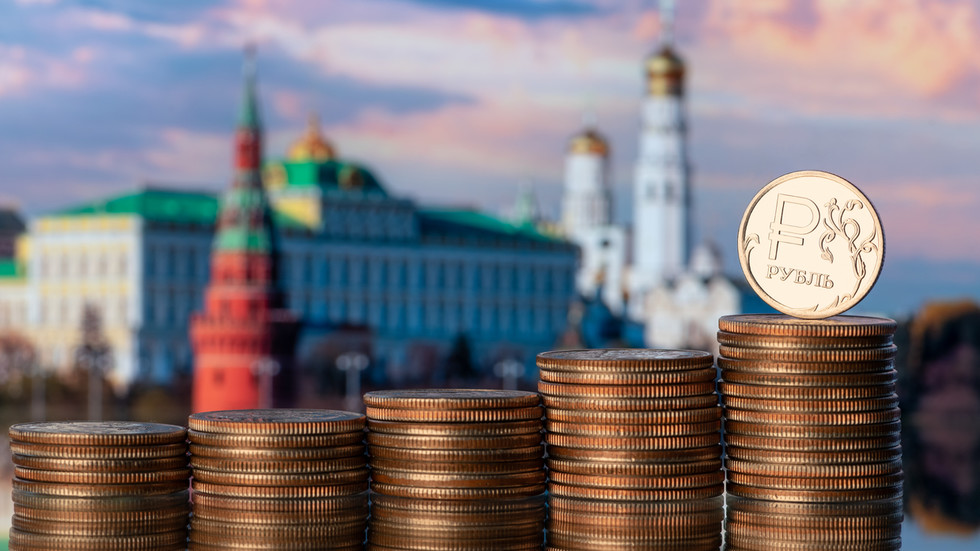The Russian currency’s rally has been fueled by rising oil prices and optimism regarding the Ukraine peace talks, analysts say
The Russian ruble soared to a two-year high against the US dollar in forex trading on Thursday, supported by positive geopolitical developments and favorable conditions in global oil markets, according to analysts.
The Russian currency, which has been strengthening for several months, traded below 78 rubles against the dollar on Thursday afternoon, its strongest level since mid-May 2023.
Russia’s announcement that it has drafted a peace memorandum and rising oil prices have contributed to the ruble’s strength, Yevgeny Loktyukhov of Promsvyazbank told the business daily RBK.
Russian Foreign Minister Sergey Lavrov proposed holding the next round of Ukraine peace negotiations in Istanbul on June 2. Meanwhile, US President Donald Trump reiterated that he would not impose anti-Russian sanctions, expressing hope for a resolution to the conflict.
Brent crude, the global benchmark for Russia’s main export, rose 1.2% to $65.68 per barrel.
The improved geopolitical backdrop and favorable oil market conditions should offset the typical month-end dip in foreign currency supplies following tax payments, Loktyukhov said.
Oil exporters typically convert foreign currency earnings into rubles at the end of each month in order to settle local obligations, providing support to the Russian currency.
Additional support for the ruble comes from ample foreign exchange liquidity in the market and weak demand for foreign currency, according to Natalia Pyryeva, lead analyst at investment firm Tsifra Broker.
Some analysts see potential for further gains, projecting the ruble could strengthen to 75 per dollar this month if geopolitical momentum persists. However, they have warned that the rally may be short-lived without tangible progress.
Moscow and Washington have resumed high-level diplomatic engagement following US President Donald Trump’s return to the White House. He has repeatedly called for a swift resolution to the conflict and a reset in bilateral relations. Last week, he and his Russian counterpart Vladimir Putin held a two-and-a-half-hour phone call, which both leaders described as productive.
Earlier this month, Russian and Ukrainian delegations met in Istanbul for their first direct talks since Kiev unilaterally withdrew from the peace process in 2022. As a result of the talks, the two sides conducted the largest prisoner swap to date, with each country releasing 1,000 individuals.
You can share this story on social media:
Read the full article here


